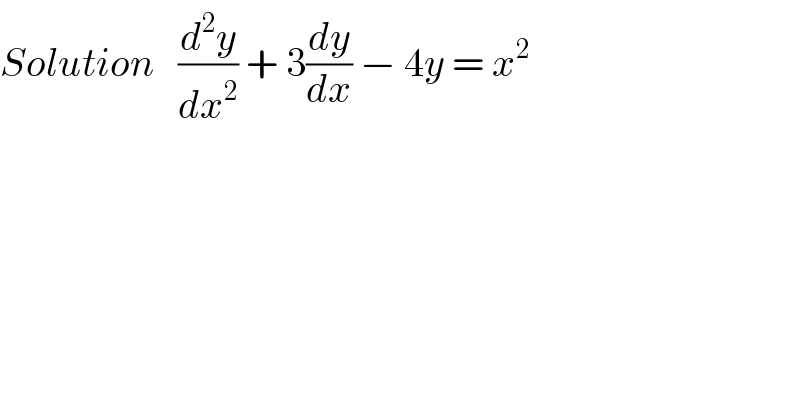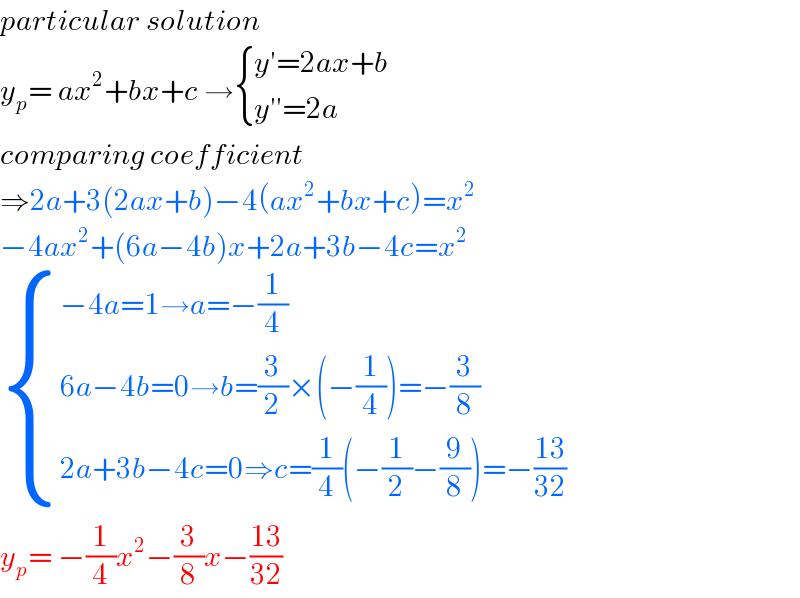
Question and Answers Forum
Previous in Differential Equation Next in Differential Equation
Question Number 117728 by syamil last updated on 13/Oct/20

Answered by TANMAY PANACEA last updated on 13/Oct/20
![y=e^(mx) (m^2 +3m−4)e^(mx) =0 e^(mx) ≠0 m^2 +4m−m−4=0 (m+4)(m−1)=0→m=1,−4 C.F=C_1 e^x +C_2 e^(−4x) P.I=(x^2 /(D^2 +3D−4))=(x^2 /((D+4)(D−1)))=(1/5)((1/(D−1))−(1/(D+4)))x^2 y=(1/5)[((−1)/(1−D))−(1/(4(1+(D/4))))]x^2 y=((−1)/5)[(1−D)^(−1) +(1/4)(1+(D/4))^(−1) ]x^2 y=((−1)/5)[(1+D+D^2 +D^3 +...)+(1/4)(1−(D/4)+(D^2 /(16))−(D^3 /(64)))]x^2 y=((−1)/5)[(x^2 +2x+2)+(1/4)(x^2 −((2x)/4)+(2/(16)))] =((−1)/5)[((5x^2 )/4)+2x(1−(1/(16)))+2+(2/(64))] =((−1)/5)[((5x^2 )/4)+((15x)/8)+((130)/(64))] y=C_1 e^x +C_2 e^(−4x) −(1/5)(((5x^2 )/4)+((15x)/8)+((65)/(32)))](Q117775.png)
Answered by john santu last updated on 14/Oct/20

Answered by Bird last updated on 14/Oct/20

